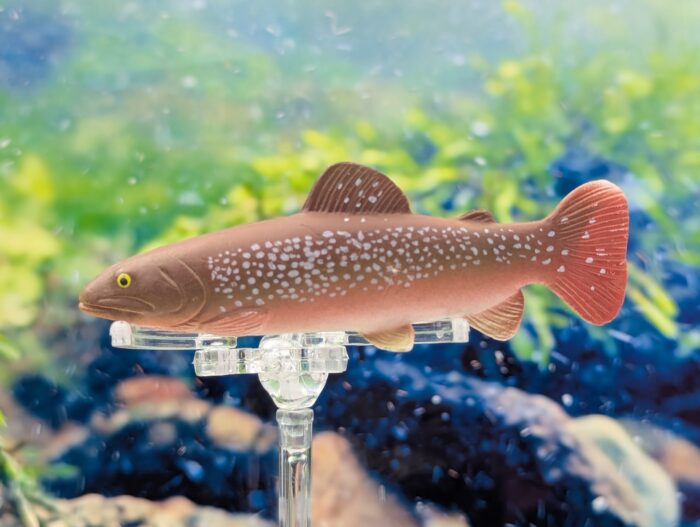There are criminally few toys of hummingbirds, which are surely some of the most beloved and extraordinary birds across the Americas. Perhaps their diminutive size and delicate forms intimidate toy manufacturers, or maybe they just get bad luck of the draw when new releases are chosen. Whatever the cause, toy companies have left a vacuum in this corner of bird collectibles; so any new contribution is to be welcomed.
Mandarin Dogfish, Kitefin Shark, Japanese Angelshark, and Roughskin Dogfish (Plush Sharks Vols. 2-4 by Qualia)

Review and images by Alopias superciliosus; edited by bmathison1972
I appreciate Shark Week on the Animal Toy Blog far more than I do the actual shark week programming on Discovery because the reviews on the Blog are more in line with what Shark Week should be and once was: an educational look at a fascinating group of animals, as opposed to over-dramatized, fear-mongering pseudo-science.
Porbeagle Shark (Wild Safari Sealife by Safari Ltd.)
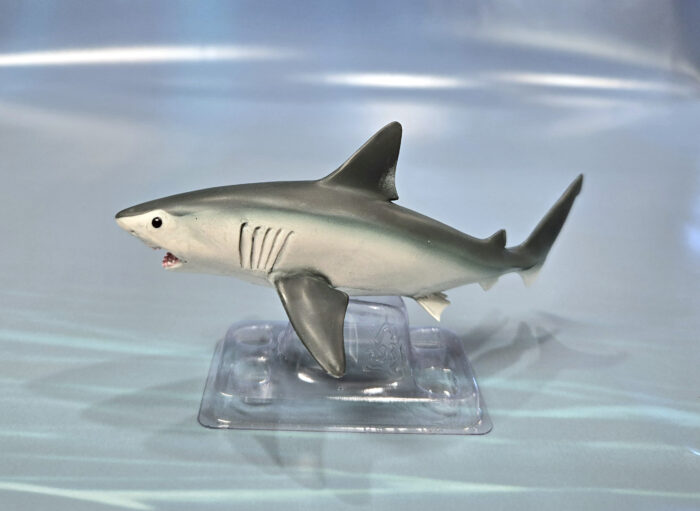
The porbeagle shark (Lamna nasus) is a mackerel shark of cold waters. The origin of its common name is unknown. One theory is that ‘porbeagle’ is a combination of ‘porpoise’ and ‘beagle’, in reference to the shark’s tenacious hunting behavior. Another is that it is a combination of the Cornish words porth (harbor) and bugel (shepherd).
Great White Shark, 2016 (Wild Safari Sealife by Safari Ltd.)
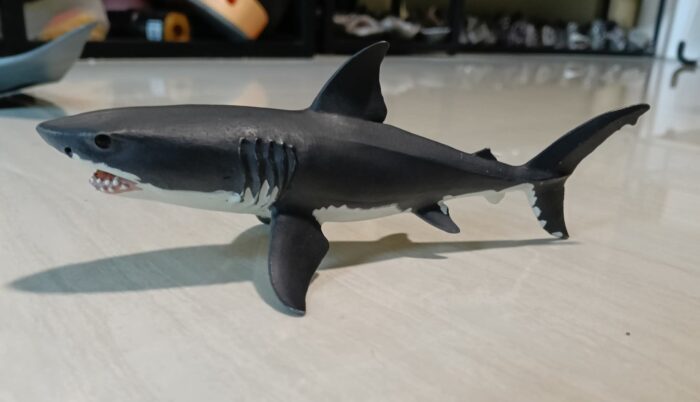
Review and images by JimoAi; edited by bmathison1972
It’s Shark Week on the Blog once again and for today’s subject, we’ll be looking at the magnificent and feared great white shark (Carcharodon carcharias), a species that needs no introduction, being prominently featured in many games, movies, books and toys.
Thresher Shark (Marine Life by Papo)
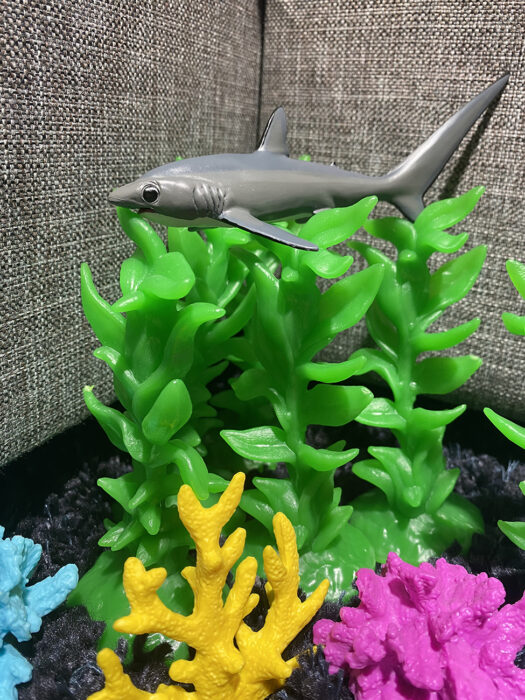
Review and images by Alopias superciliosus; edited by bmathison1972
I’m happy to be back for my third Shark Week with the Animal Toy Blog, and this year I will be contributing two reviews! First up, arriving just in time for Shark Week, Papo’s newly released thresher shark.
Thresher sharks are a fascinating family of mackerel sharks easily distinguished by their incredibly long upper caudal fin lobes.
Angular Roughshark (Return to Isle of Jaws by Discovery Science)
Scalloped Hammerhead (BJ Toy Company)
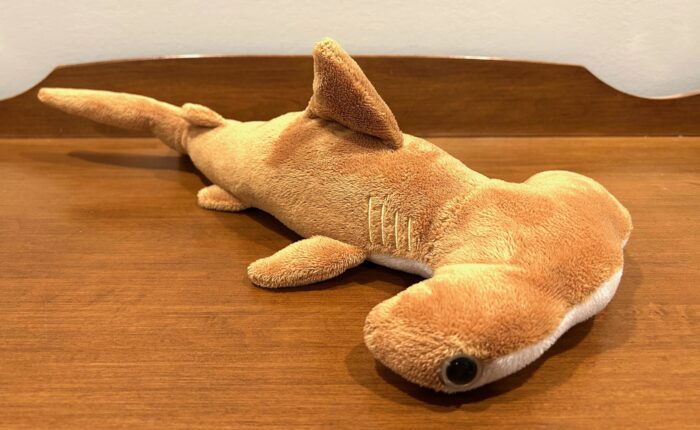
Review and images by Suspsy; edited by bmathison1972
For Shark Week this year, I’m covering this charming plush hammerhead from BJ Toy Company. I acquired it back in 2009 when I visited the Memphis Zoo in Memphis, Tennessee. And it ended up coming in rather handy when my suitcase got lost on the flight back home.
Pufferfish (Incredible Creatures by Safari Ltd.)

Pufferfishes are a family of fishes scientifically known as Tetraodontidae and although they can also inflate their bodies the porcupinefishes of the Diodontidae family are not generally regarded as pufferfishes. The two families are closely related of course, both belonging to the Tetraodontiformes order. And although any fish in the order that puffs up can colloquially be called a pufferfish it’s important to mention the distinction when reviewing today’s subject, a porcupinefish that Safari marketed as a pufferfish.
Brook Trout, prototype (3″ figure by Replica Toy Fish) + custom Bull Trout
Maine Lobster, large and small (Sea World by AAA)
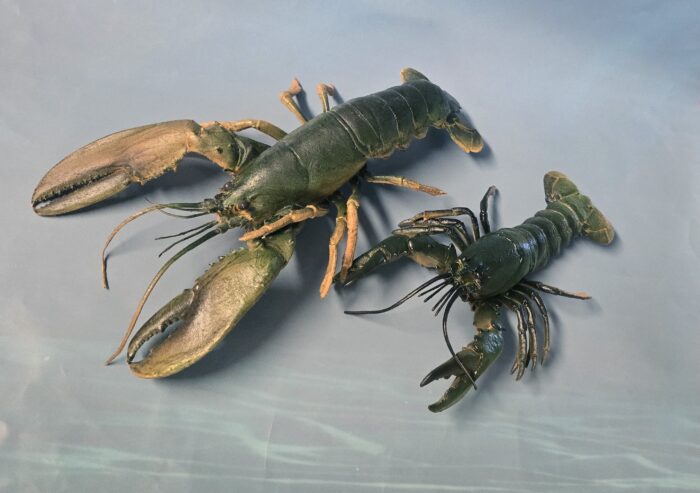
AAA is well-known for casting figures from actual specimens. They have done it with snakes, turtles, lizards, frogs, mollusks, insects, and, the topic of today, crustaceans. Most of these were probably cast from specimens readily available through biological supply companies or possibly wet markets in Asia and other parts of the world.
Queen Triggerfish (Incredible Creatures by Safari Ltd.)

Triggerfish are a group of ray-finned fishes belonging to the Balistidae family within the Tetraodontiformes order (along with pufferfish and ocean sunfish, among others) There are 40 described species, and they all live in tropical and subtropical waters. They get their name because the second spine on their dorsal fin acts as a trigger of sorts for the first spine.
Mahi-Mahi (Incredible Creatures by Safari Ltd.)
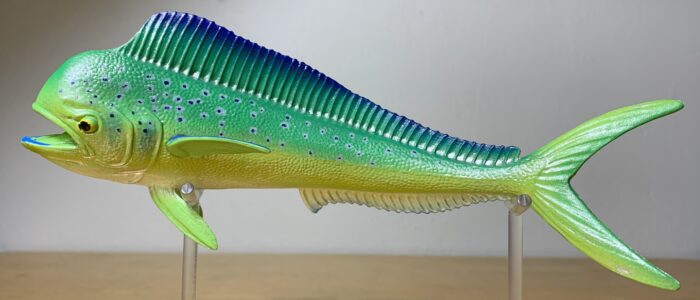
The mahi-mahi (Coryphaena hippurus) is a highly sought after species of sportfish belonging to the Coryphaenidae family along with one other species. They’re prized recreationally and commercially for their size, beauty, and mild sweet flavor. They’re also abundant within their range and listed as least concern by the IUCN.






